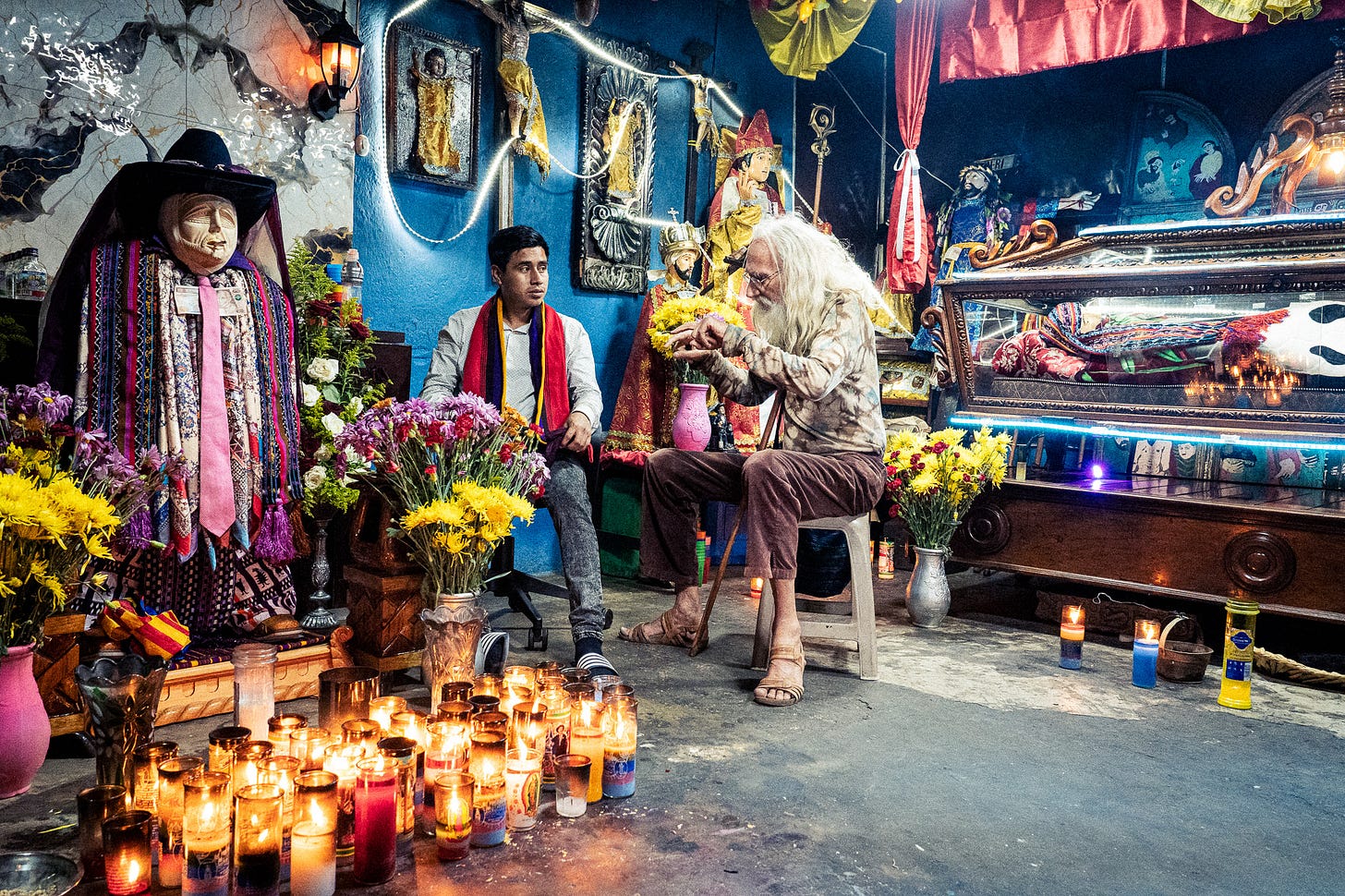If life was a carnival, what mask would you wear next?
On Maya tricksters, sacred mischief, and the freedom to play new roles in life.
This week, I visited Santiago de Atitlán, a town across the lake from Lomas de Atitlán, where I’m currently in an artist residency. Santiago is known as a spiritual center for the Tz’utujil Maya and home to the syncretic figure Maximon—Saint Simon, or “the grandfather”—an ambiguous spirit blending Catholicism and Maya beliefs. His effigy is kept in priv…
Keep reading with a 7-day free trial
Subscribe to CAPI TACO'S FIELDNOTES to keep reading this post and get 7 days of free access to the full post archives.


